From as tiny as a pea, to as large as a dinner plate, spiders vary hugely in size. They also show considerable sexual dimorphism, which is when males and females differ in physical characteristics within the same species.
In spiders, females can be much larger than their male counterparts. This is due in part to the reproductive advantages of being big - a bigger body can carry more eggs.
These females can achieve some jaw-dropping dimensions. Whether you are an arachnophobe or arachnophile, you would be hard-pressed to not be awed (and let's be honest, a little scared) of the spiders on this list.
- Why are people scared of spiders?
- Scariest spiders: 8 arachnids that may give some people the creeps
Learn more about spiders of all sizes here, with our list of incredible spider facts.
10 biggest spiders in the world
1. Goliath birdeater (Theraphosa blondi)
Size: 175g and up to 30 cm leg span!
The largest spider in the world and the first on our list is the impressively named Goliath birdeater. Hailing from the rainforests of northern South America this is the largest spider by body mass (up to 175g) and by body length (13cm). This heavy arachnid is only marginally pipped to the post in terms of leg span by the next on the list.
Its name derives from an 18th-century engraving that depicted a tarantula of a different species eating a hummingbird, which led to the entire Theraposa genus being called ‘bird eaters’. This species mainly feeds on worms, amphibians, and large insects, but it does however sometimes kill and eat birds!
2. Giant huntsman spider (Heteropoda maxima)
Size: 167g, 30cm leg span
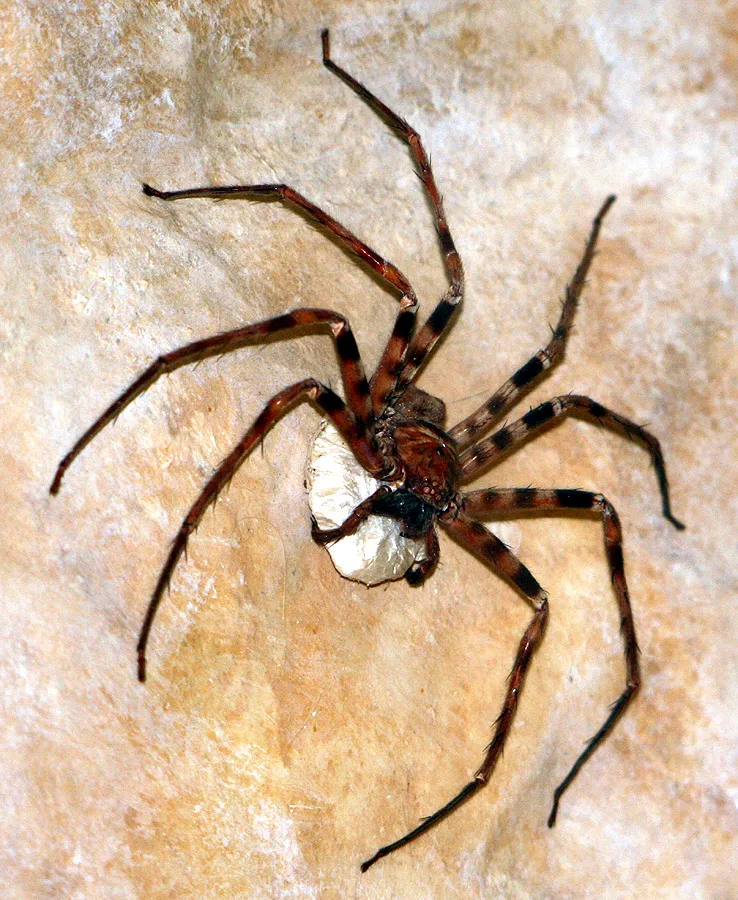
Just as impressive is this species native to Laos, in Southeast Asia. The giant huntsman spider is known as the world’s largest spider by leg span, measuring up to a whopping 30cm toe-to-toe.
Although some goliath birdeater individuals have matched this, giant huntsmen tend to be larger on average, giving them the title. Cannibalism has been observed in this species, with the larger females consuming males after mating. This may seem shocking to us but it is actually very normal spider behaviour and gives the female a nutritious boost that can aid reproduction!
Learn about ten more cannibal animals here.
3. Brazilian Salmon Pink Birdeater (Lasiodora parahybana)
Size: Females can weigh more than 100g, leg span of up to 28cm
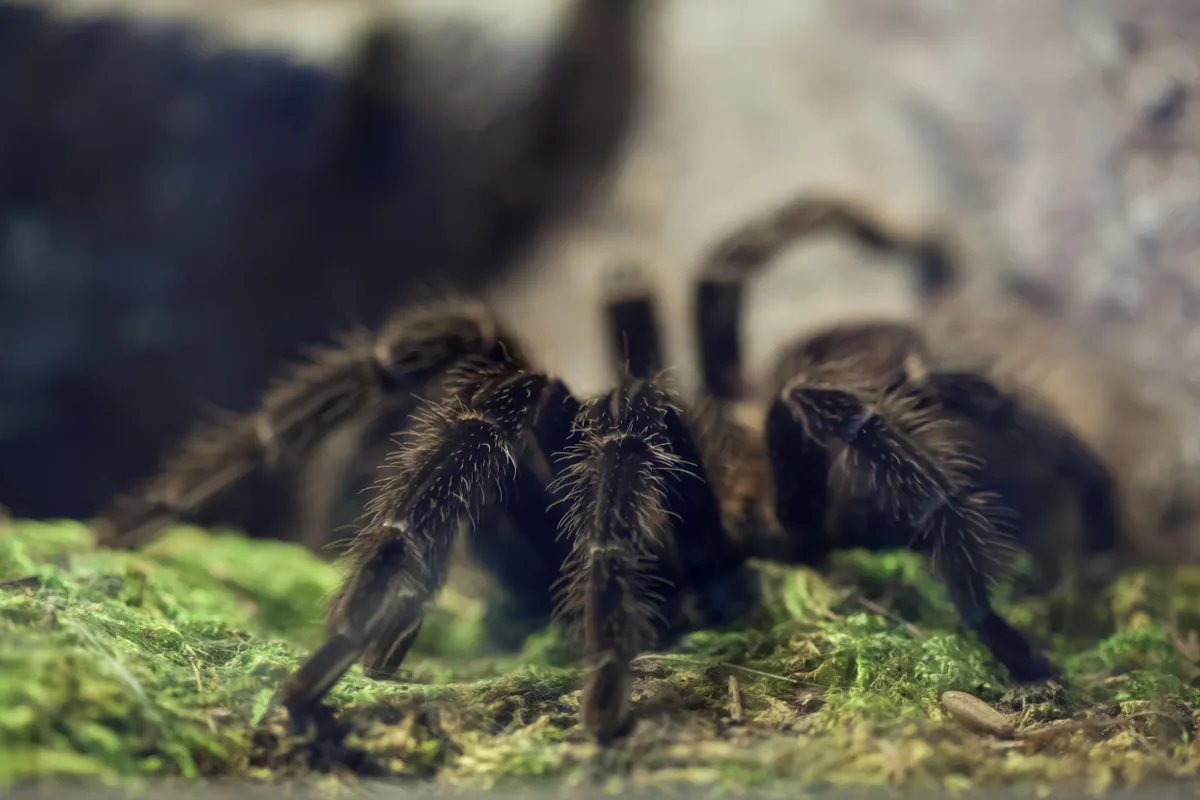
This next species is a bit of a mouthful, as well as a handful, weighing about as much as a banana! As the name suggests, they can be found in the forests of Brazil, but are also very popular in captivity around the world as pets. This is because they are fairly docile. They are not always laid-back however and when threatened can give a painful bite or flick irritating barbed hairs at a wannabe predator!
4. Brazilian Giant Tawny Red Tarantula (Grammostola anthracina)
Size: leg span of around 23cm
Another species that is valued as a pet is the Brazillian Giant Tawny Red, a glossy, all-brown tarantula that can have a leg span of around 23 cm and has the distinction of being one of the longest-lived tarantulas (living up to 30 years!). Such desirability can have damaging effects on wild populations, however. This species is sold as part of the black-market illegal tarantula trade, a lucrative industry that encourages traders to poach spiders from the wild to keep up with demand, taking a toll on local populations.
5. Chaco golden-knee tarantula (Grammostola pulchripes)
Size: leg span of up to 20.3 cm
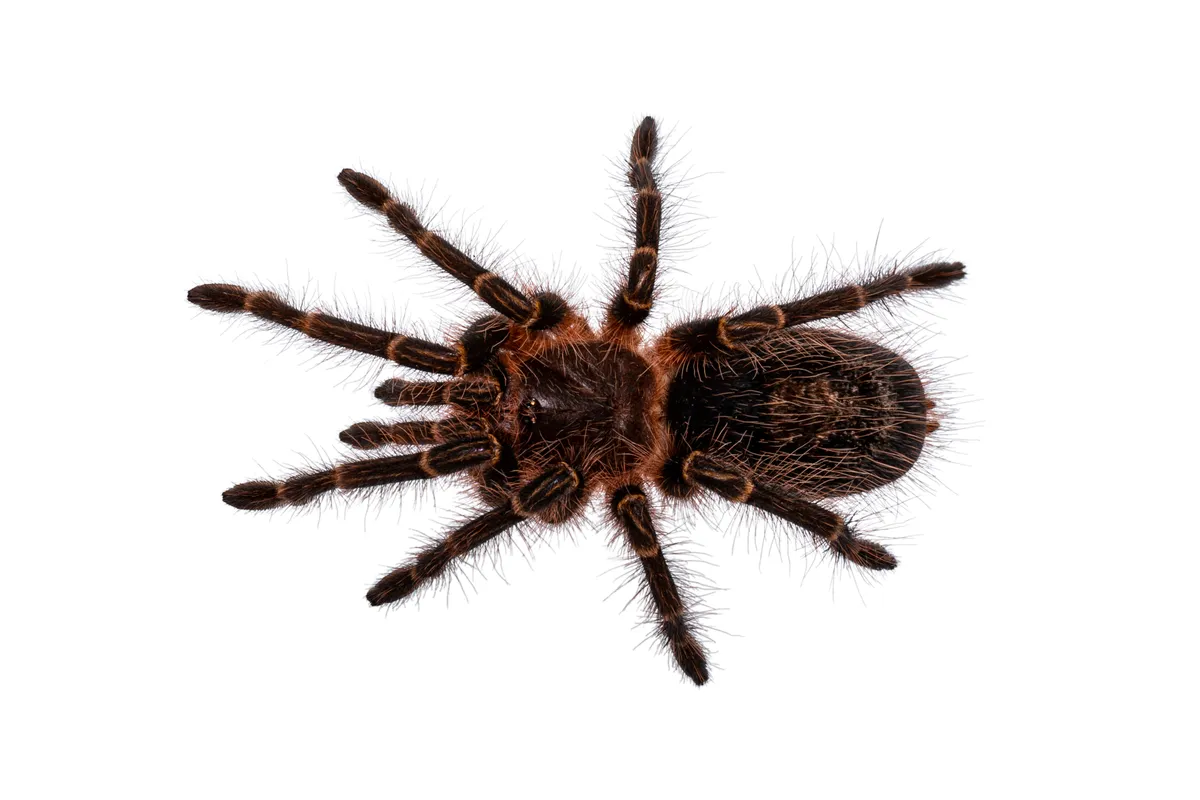
This particularly handsome (and hairy) tarantula is to be found scuttling around the warm grasslands of Argentina and Paraguay. You may be wondering what exactly is a tarantula? Tarantulas are any member of the spider family Theraphosidae. They are large and often hairy, as this one is. The genus this tarantula belongs to (Grammostola) is just one of 156 in the family, which contains a total of 1,040 described species.
6. King baboon spider (Pelinobius muticus)
Size: leg span of up to 20 cm
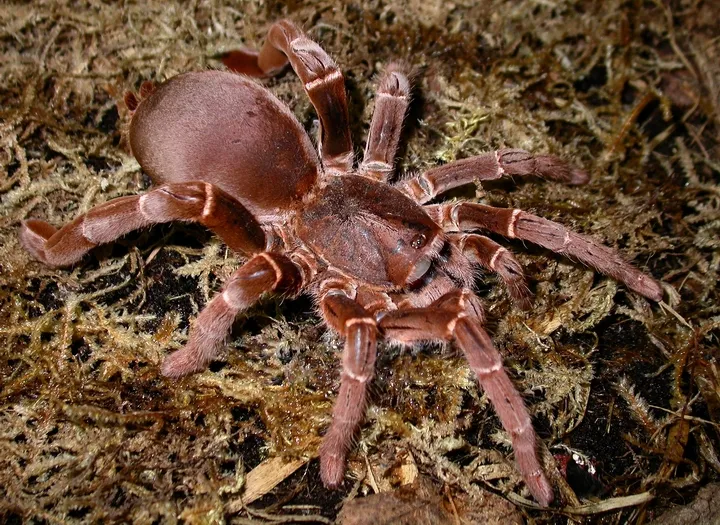
Another quite striking-looking tarantula, with its velvety, rusty-brown colouring, is the King baboon spider. Native to Uganda, Tanzania, and Kenya (the first African spider on our list) these tarantulas have a peculiar method of self-defence. As well as having a painful venomous bite, these spiders use a technique called stridulation to ward off predators. By rubbing together the hairs on their front legs they are able to create a raspy hissing noise, hopefully striking fear into anyone nearby.
7. Colombian Giant Tarantula (Megaphobema robustum)
Size: leg span of around 20cm
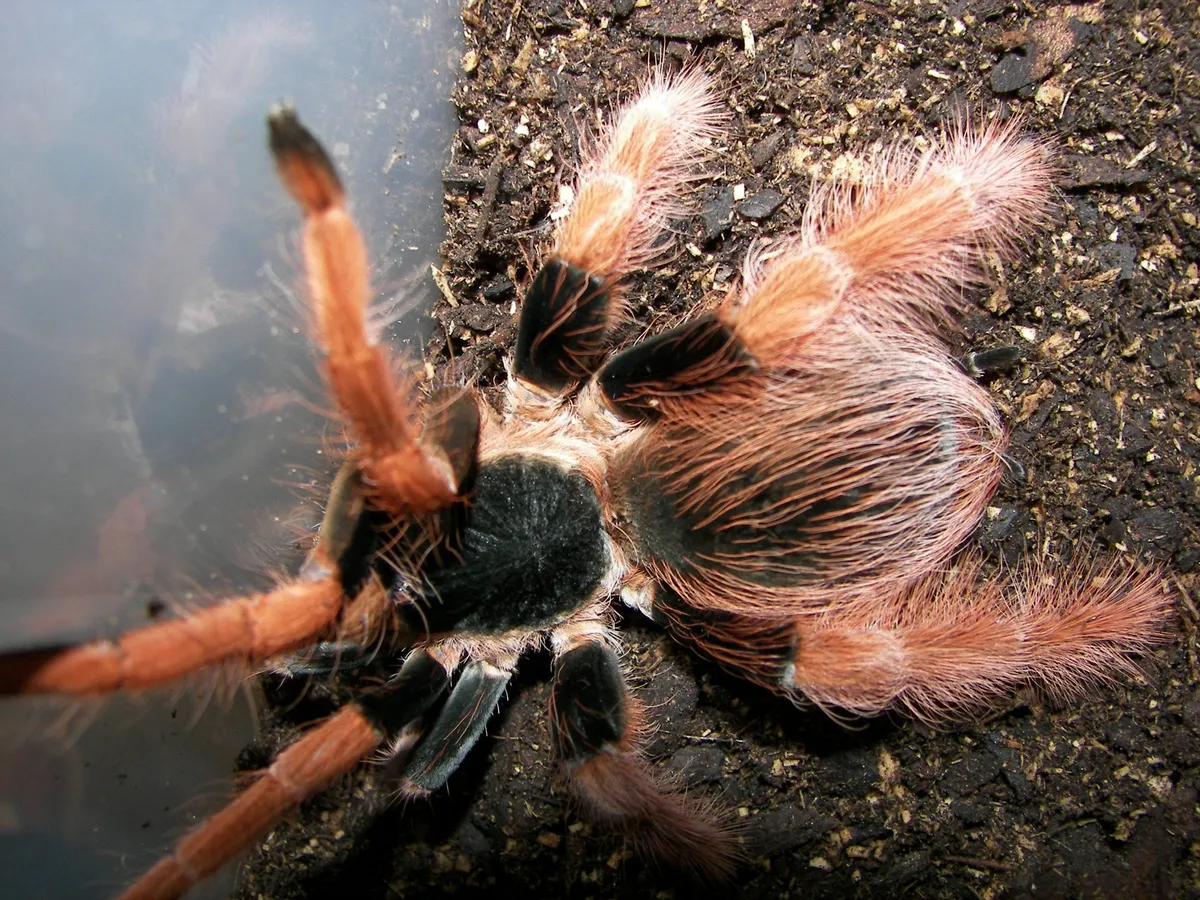
The Columbian giant tarantula is a shy spider that more likely to run and hide than to stand its ground, despite its considerable size. They do however have some interesting defensive tactics, bobbing up and down as a first warning, then spinning in circles to confuse an attacker, and kicking out with their spiked back legs. This species is found in the tropical rainforests of Brazil and Columbia.
8. Face-sized tarantula - (Poecilotheria rajaei)
Size: leg span of up to 20cm
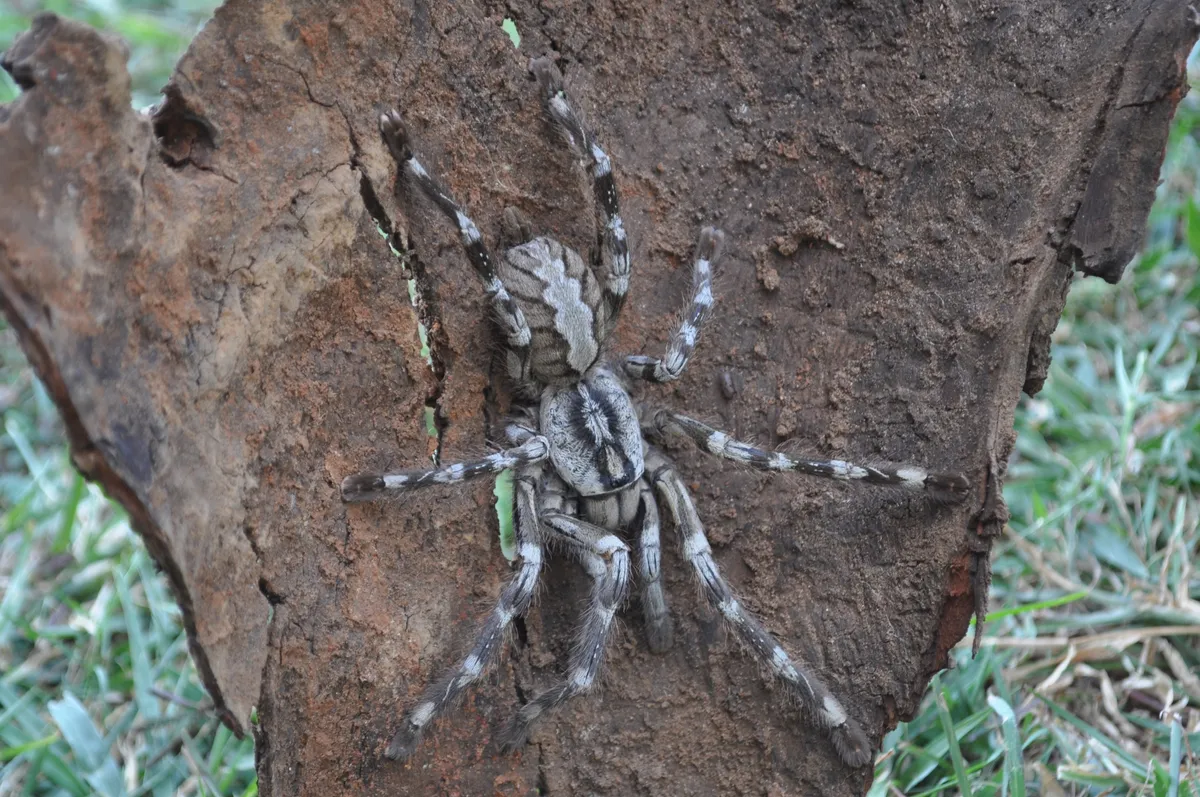
This species surely wins the prize for the most horror-inducing name! With a leg span of up to 20 cm the name does seem appropriate, but hopefully you are never in a position to find out…
This Sri Lankan spider is yet another member of the tarantula family and like many uses venom to disable and kill its prey, which includes lizards, snakes, birds and small rodents. This venom is not strong enough to kill a human however (should you ever find one on your face!).
9. Brazilian wandering spiders (Phoneutria sp.)-
Size: some can reach up to 18cm in leg span
Spiders in this genus are quite variable in size, but some can grow up to 18cm in leg span, with a body length of about 5cm. Despite being called Brazillian wandering spiders they can also be found throughout South America from Costa Rica Southwards.
They are also sometimes known as banana spiders due to their habit of hiding in dark, moist places including in banana plants. This has also led to them occasionally being found in banana shipments that have been shipped across the world. In 2005 a man was bitten by a wandering spider that was hiding in a box of bananas delivered to his pub in England.
10. Sand-dwelling huntsman spider (Cerbalus aravaensis)
Size: leg span of up to 14cm

Found in the sand dunes of Israel and Jordan this rare and sizable spider is relatively recently discovered. It was first described by an Israeli arachnologist in 2007. Living actually in the sand dunes these spiders construct clever underground dens with hinged trapdoor entrances made of silk and sand to hide them from predators and the hot sun. Unfortunately, the dunes in which they live are rapidly disappearing due to mining projects, making the future of this species uncertain.
Sand dunes can be very important habitats. Learn about the wildlife living in and on one of our own sand dune environments, Sefton Coast.
- World's most venomous spiders: Are these deadly spiders as fearsome as their reputation?
- 5 of the biggest spiders in the UK: look for them in canals, gardens, ditches... and under your bed
- Biggest insects in the world, from a 60cm-long stick insect to a hefty 100g beetle larva
- What is the world’s largest frog?
- What's the largest beetle in the world?
- The 10 biggest birds in the world (by maximum weight)
Top image © Getty Images
